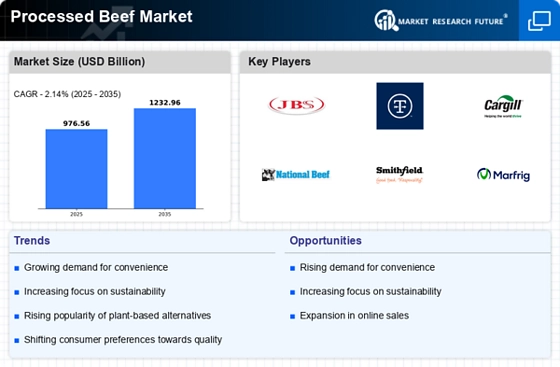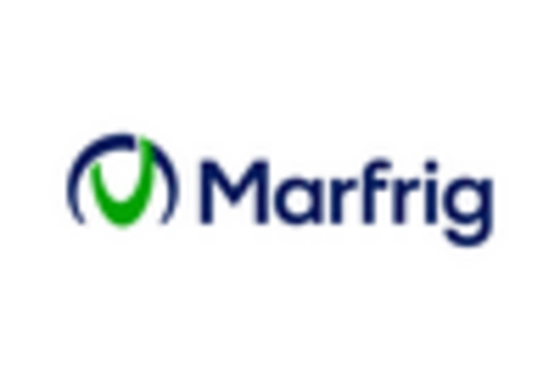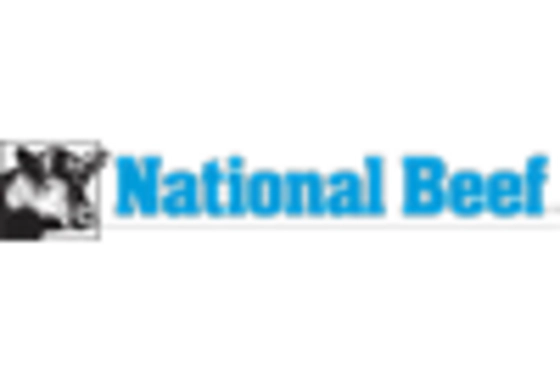The Processed Beef Market is characterized by a dynamic competitive landscape, driven by factors such as increasing consumer demand for convenience foods, health consciousness, and the rise of e-commerce. Major players like JBS S.A. (BR), Tyson Foods, Inc. (US), and Cargill, Inc. (US) are at the forefront, each adopting distinct strategies to enhance their market positioning. JBS S.A. focuses on sustainability initiatives, aiming to reduce its carbon footprint, while Tyson Foods emphasizes innovation in product offerings, particularly in plant-based alternatives. Cargill, on the other hand, is investing heavily in supply chain optimization and digital transformation to improve operational efficiency and customer engagement. Collectively, these strategies contribute to a competitive environment that is increasingly shaped by sustainability and technological advancements.
In terms of business tactics, companies are localizing manufacturing to better meet regional consumer preferences and optimize supply chains to mitigate disruptions. The market appears moderately fragmented, with a few dominant players exerting considerable influence. This structure allows for both competition and collaboration, as companies seek to leverage each other's strengths through partnerships and joint ventures.
In August 2025, Tyson Foods, Inc. (US) announced a strategic partnership with a leading technology firm to enhance its supply chain transparency through blockchain technology. This move is significant as it not only aims to improve traceability but also addresses growing consumer concerns regarding food safety and quality. By integrating advanced technology into its operations, Tyson Foods positions itself as a leader in innovation within the processed beef sector.
In September 2025, Cargill, Inc. (US) launched a new line of organic processed beef products, responding to the increasing consumer demand for healthier and more sustainable food options. This initiative reflects Cargill's commitment to sustainability and aligns with current market trends favoring organic and ethically sourced products. The introduction of these products is likely to enhance Cargill's competitive edge and attract a broader customer base.
In October 2025, JBS S.A. (BR) unveiled its ambitious plan to achieve net-zero greenhouse gas emissions by 2035, a move that underscores the company's dedication to sustainability. This initiative is expected to resonate well with environmentally conscious consumers and could set a new standard within the industry. JBS's proactive approach may compel competitors to adopt similar sustainability measures, thereby reshaping the competitive landscape.
As of October 2025, the Processed Beef Market is witnessing trends such as digitalization, sustainability, and the integration of artificial intelligence in operations. Strategic alliances are increasingly shaping the landscape, as companies collaborate to enhance their technological capabilities and sustainability efforts. Looking ahead, competitive differentiation is likely to evolve from traditional price-based competition to a focus on innovation, technology integration, and supply chain reliability, reflecting the changing preferences of consumers and the broader market dynamics.


















Leave a Comment